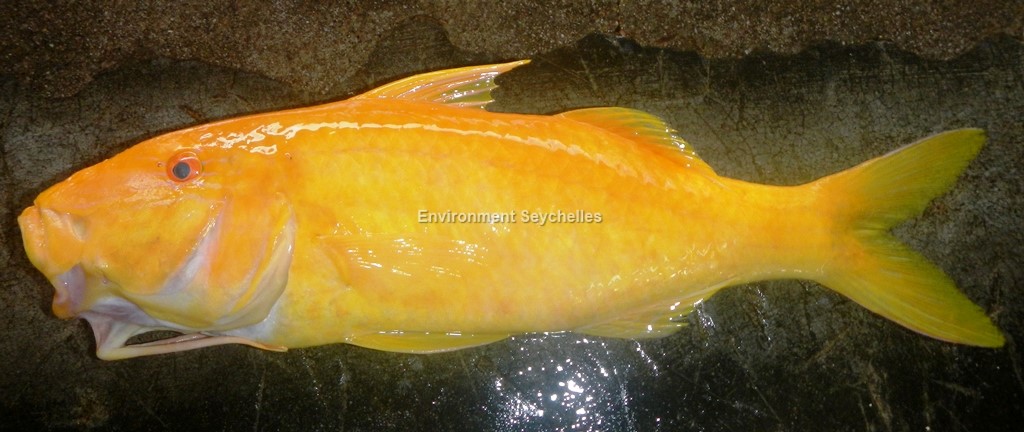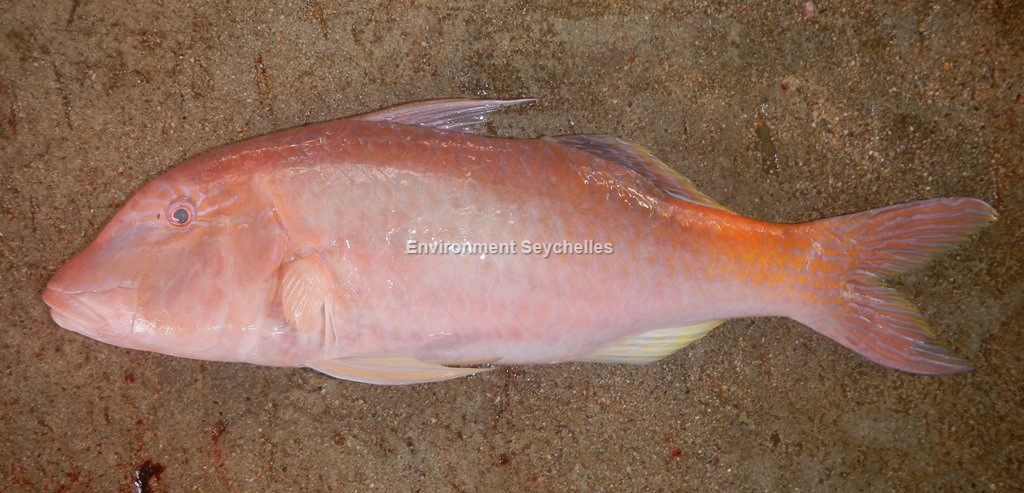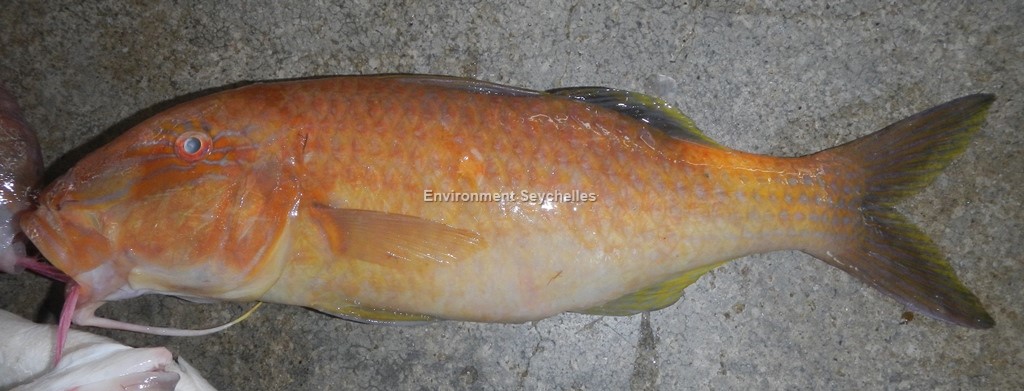Description:
Dorsal spines: 8; Dorsal rays: 9; Anal spines: 1; Anal rays: 7.
Body moderately elongate. Eyes small. 2 very long slender barbels which extend to or beyond posterior end of head. Snout moderately long, the profile slightly concave. Small mouth with single row of stout conical teeth in jaws. Maxilla reaches about 2/3 of distance to anterior edge of eye.
Colour. Narrow pale blue lines radiating from eye, longest anteriorly, down length of snout. Other blue lines on cheek and opercle. Most authors refer to two colour forms: a bright entirely xanthic (yellow) form and the other a dusky yellow dorsally, the scales heavily edged and spotted with pale blue, shading to pale lavender-grey ventrally with a large bright yellow saddle on the caudal peduncle. Narrow dark-edged pale blue stripes in second dorsal and anal fins. Caudal fin with alternating streaks of dull yellow and pale blue. In Seychelles the colour is variable pinkish-purple, pinkish-grey and yellowish brown, but in all cases the specimens bearing the distinctive large yellow peduncular saddle. Even on the xanthic form the saddle is often apparent as a brighter yellow area.
Size:
Maturity: Lm unknown. Range unknown. Max Length: 50cm TL. Commonly to 35cm TL.
Habitat and Ecology:
Inhabits coral, rocky or rubble bottoms of reef flats, lagoons, and seaward reefs (depth 2-125m). This species is more closely associated with coral reefs than other Mullidae.
Benthopelagic. Unusual amongst goatfish it feeds primarily on small fish (about 70% of its diet) and sometimes exhibit coordinated group hunting behaviour. Also consumes crustaceans, peanut worms, shrimps, crabs, octopi, and small gastropods during the day. Juveniles form schools, adults usually solitary.
Fishery Status:
This species is not protected or subject to fishery regulations. It is caught in the fish trap and handline fisheries, where it is a fairly regular but not abundant component of the catch.
Notes:
References:
Bray, D.J. 2018. Parupeneus cyclostomus in Fishes of Australia, http://136.154.202.208/home/species/589 (18/04/20).
Fischer, W. & G. Bianchi (eds), (1984). FAO species identification sheets for fishery purposes. Western Indian Ocean; (Fishing Area 51). Prepared and printed with the support of the Danish International Development Agency (DANIDA). Rome, Food and Agricultural Organization of the United Nations, vols 1-6.
Froese, R. and D. Pauly. Eds. 2018. FishBase. https://www.fishbase.se/summary/5990 (05/06/19).
Nevill, J. (2013). A Species Identification Guide for Commonly Caught Fish in the Seychelles Near-Shore Artisanal Fishery. GOS/UNDP/GEF.
Smith-Vaniz, W.F. & Williams, I. 2016. Parupeneus cyclostomus (errata version 2017). The IUCN Red List 2016: e.T69182011A115460002. https://dx.doi.org/10.2305/IUCN.UK.2016-3.RLTS.T69182011A69183284.en. (18/04/20).
Citation:




There are no comments